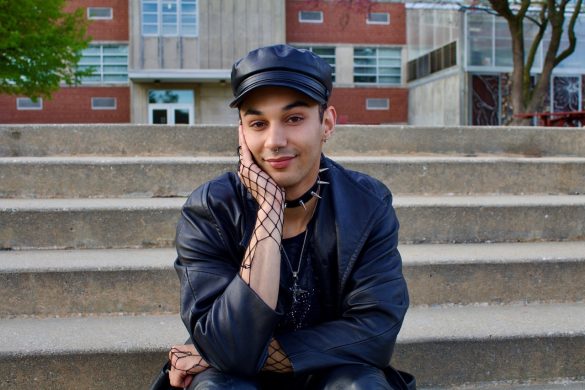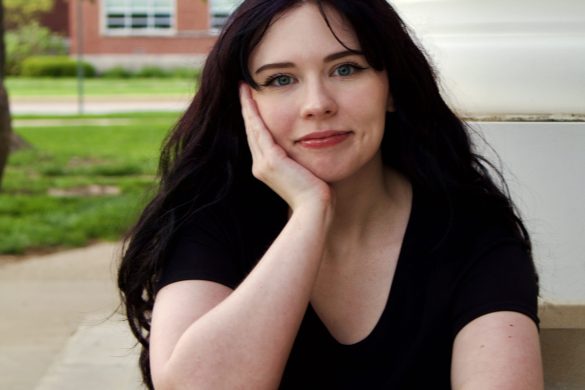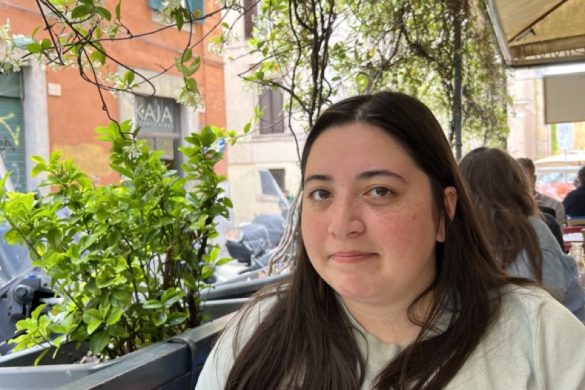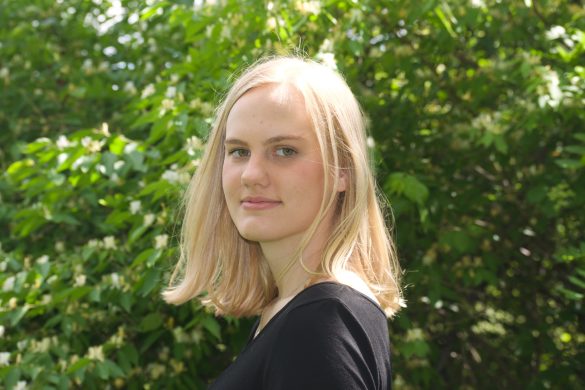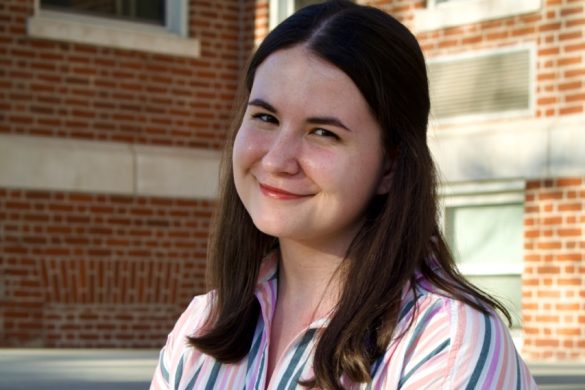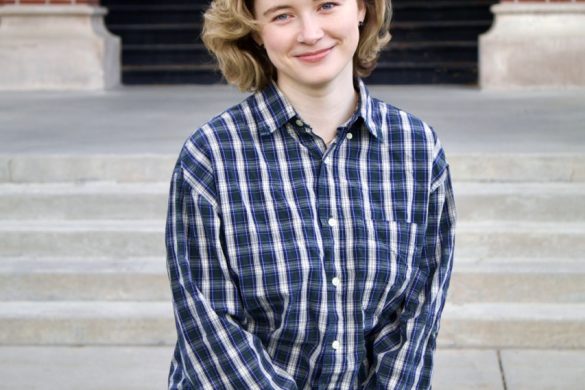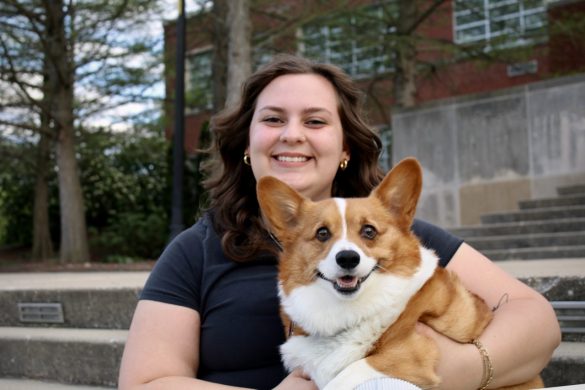This semester, I completed my junior practicum with 1984 University of Indianapolis graduate, social worker and Adoption Champion Rosie Butler to research and study the complexities of child welfare, specifically foster care and adoption. That study included interviewing people who have engaged with the foster care system and adoption processes, such as adoption professionals, parents or adoptees.
I learned a great deal about an area of practice that I previously knew very little about. And while many references to foster care and adoption exist in modern pop culture, such as “Annie,” “Foster’s Home for Imaginary Friends,” “The Last Black Unicorn” by Tiffany Haddish, and even the range of adoptive parents in Japanese anime, there is so much more to this expansive part of the child welfare system. So today, I want to share some of what I learned while studying and interviewing folks about foster care and adoption within the world of child welfare to help celebrate National Adoption Month, which takes place each November.
National Adoption Month is about engaging and encouraging understanding of the diversity of families, which includes fostering and adoption. In the U.S. alone, over 600,000 youths spend time in foster care services each year. That involves a lot of youth and families, and the stories involved deserve acknowledgment and celebration. This is a vulnerable population whose needs deserve to be met. These youths range in age from infants to 17-years-old and often wait years to be adopted out of foster care. Many never are adopted, as thousands of youth age out of foster care and as a result face higher risks of homelessness, employment issues, criminal recidivism and grooming or abuse by sex traffickers.
We need to learn about and support the needs of our foster and adoptive communities because these communities are about finding and creating family, and family has always been a central unit of our society. And just as a note, foster youth are not the only ones in need of adoption services— there are youths from a variety of backgrounds who need adopting! With that said, I’ll start sharing some more things I’ve learned about the field.
Are there limitations to who can or can’t foster or adopt?
Yes and no.
Generally, there aren’t requirements like being married or wealthy or college-educated or anything like that to foster or adopt. As long as you can provide a safe, supportive and stable home for your potential child(ren), then you’re likely eligible to foster or adopt. Of course, that would be after going through assessments of fitness and compatibility for licensure to foster/adopt, which involves interviews, income verification and other forms of assessment.
It is also important to know that each agency may have certain restrictions on who can foster or adopt through them. For instance, if you have a felony, you’re unlikely to ever be able to foster or adopt from foster care. And if you are planning on doing an independent, private or international adoption, you may need to consider additional eligibility criteria of the involved agencies, such as church foster homes or some international organizations.
Regardless, the standards for fostering or adopting are generally rigorous. Thus, it is incredibly important to know the policies of the agency you’re looking at fostering/adopting through because there can be important differences.
What are some misunderstandings people may have about fostering or adopting?
There are actually quite a few common misconceptions about fostering and adoption. So I’ll just a list and briefly address those that I know of:
- “Blood is thicker than water; an adoptive family isn’t as real as a biological family.” – Biology does not automatically confer love and attachment in family. Rather, love and attachment in our family relationships, by adoption or by birth, are built from choosing to nurture those bonds. Adoption is one form of such a decision.
- “Foster and adoptive kids are extra difficult.” – Foster and adoptive youths may have faced traumas like neglect, abuse and other adverse childhood experiences before meeting you. Their behaviors may reflect those traumas, but it does not make them “bad” or “difficult,” they just need support, like any other kid.
- “Adopting a kid is rescuing them.” – Adoption is not volunteer work, it is a means of creating family. “Savior language” downplays the family-building in adoption. By adopting, you lift kids out of cycles of poverty or abuse, but treating them as “basketcases to rescue” dehumanizes them and negates the gifts of adoption.
- “Many foster/adoptive parents only do it for the money.” – This stereotype is caused by sensational stories in the media. Parents who foster/adopt may be eligible for modest financial support to care for their children, which is provided to make fostering/adopting easier for families, not to profit.
- “Adopting is as easy as picking a baby and taking them home.” – While you can look through profiles of foster youths to match with (a la the Indiana Adoption Program), adoption requires going through a rigorous licensing process. This involves training, home studies, background checks, and a number of other things to become eligible to foster/adopt.
How do professionals engage with foster and adoptive youths?
From the interviews and readings I’ve done, three things appear to be key:
- The Value and Importance of Permanency: Adoption and foster care professionals want to ensure that youths have safe, stable and supportive homes to develop in. Agencies like Child Protective Services limit removing children from their homes to being a last resort. Professionals seek permanency for youths either by improving the conditions of their homes-of-origin through interventions or by placing them in “forever homes” via adoption.
- Family-Centered Practice: This is the idea that youth grow up best in a family unit, and the best way to support that development is to provide services that engage and empower family units to live their lives to the fullest.
- Trauma-Informed Care: As youths traverse the processes of foster care and/or adoption, they often go through it with a history of trauma. As professionals, and even for prospective parents, it is important to recognize how adverse childhood experiences may affect youths and take steps to reduce the impact of these traumas and prevent retraumatization from occurring.
What are some ways our community can learn about and celebrate adoption?
There are plenty of ways to get involved in learning about and celebrating adoption.
- Read and listen to the stories and perspectives of people whose stories include foster care and/or adoption is always a good start. Encourage people to think about fostering or adopting. Have those conversations, even if they feel a little intimidating at first!
- Normalize and appreciate how diverse families can be. Fostering and adoption are as valid a form of family as any other!
- When you hear someone expressing a misconception of adoption or foster care, whether it’s silly or harmful, correct them. We can’t do better if we don’t know better.
What are some resources for students to learn more about foster care or adoption?
If you’re interested in learning more about the complexities and processes involved in fostering or adopting, check out:
- Child Welfare Information Gateway through the Children’s Bureau
- AdoptUSKids through the Adoption Exchange Association
- National Foster Parent Association
- Considering Adoption
If you or someone you know is seriously considering fostering and/or adoption, great places to start are:
- Resource and Adoptive Parent Training in Indiana
- Indiana Adoption Program
- Wendy’s Wonderful Kids
- Snowflakes Embryo Adoption Program through Nightlight Christian Adoptions
If you want to support the needs of foster youth, but don’t want to foster or adopt, you can explore volunteering with the following organizations:
- National CASA/GAL Association for Children
- Child Advocates in Indianapolis
Tylyn K. Johnson (he/him) is a third-year social work student in the Strain Honors College. He is also a part-time writer.

